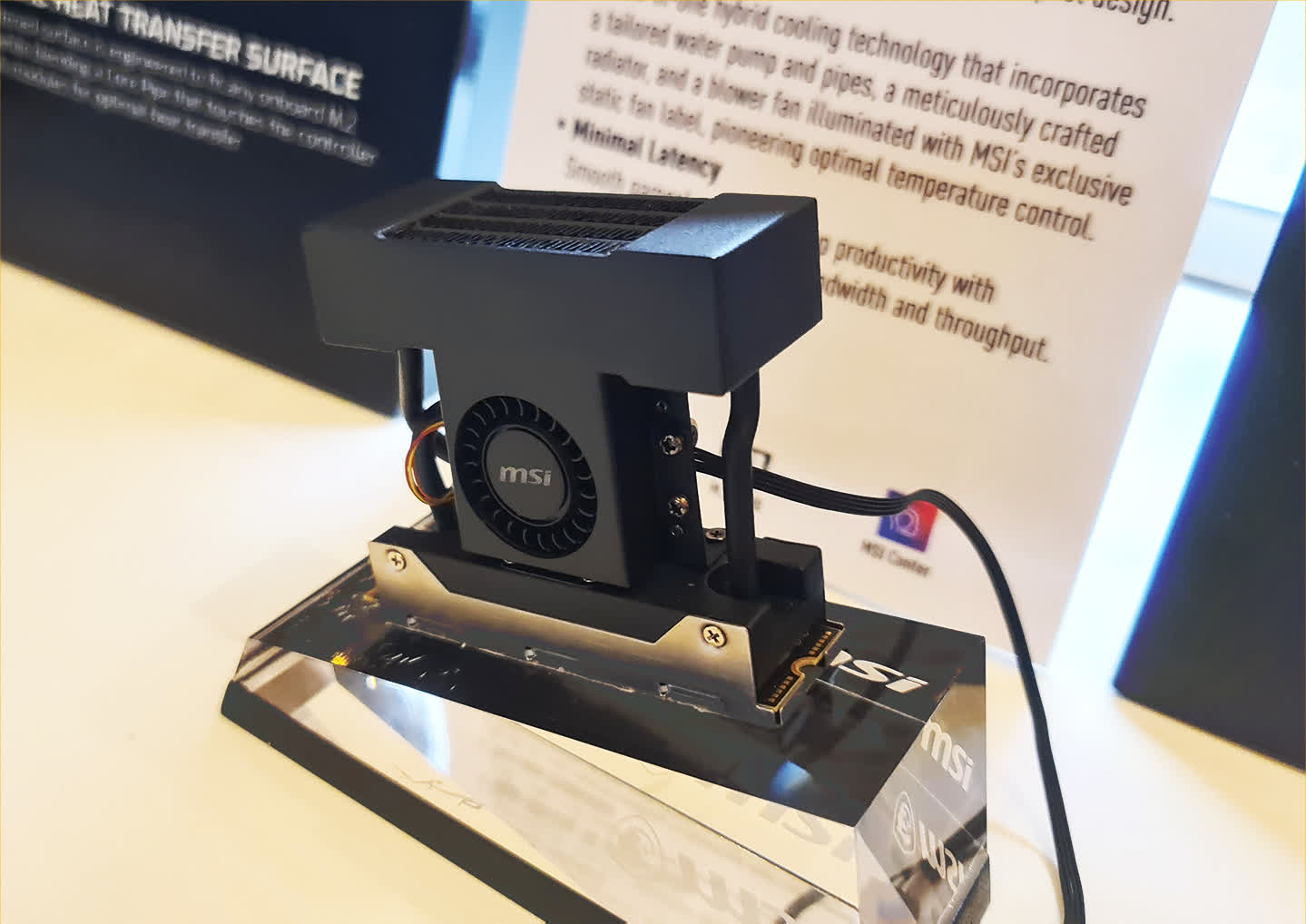Editor's take: MSI has outdone itself at CES 2024 with the introduction of a new PCIe 5.0 SSD that apparently runs so hot, it needs its own custom liquid cooling solution. Do you need a liquid-cooled SSD? Of course not. Sure, such a system could help eke out a bit more performance from an already super-fast platform but at this level, you're more or less splitting hairs. It's neat from a hardware enthusiast perspective, but it's an unnecessary risk that's mostly just for the brag factor.

The MSI Spatium M580 PCIe NVMe M.2 2 TB Frozr Liquid (say that three times fast) was spied on the show floor by the crew over at Tom's Hardware. According to accompanying literature, the drive is capable of read speeds of up to 14,000 MB/s and writes of up to 12,000 MB/s – blistering fast, no doubt, but is the juice worth the squeeze?
The Spatium M570 Pro Frozr we profiled late last year featured a towering air cooler with sequential read speeds up to 12,400 MB/s and sequential writes of 11,800 MB/s, which MSI said was ideal for demanding content creators, professionals, and gamers.
The SPATIUM M580 PCIe 5.0 NVMe M.2 FROZR LIQUID employs the Phison E26 controller and boasts top continuous read and write speeds of 14,000 MB/s and 12,000 MB/s, available in 1TB, 2TB, and 4TB capacities.https://t.co/iXzhU5nbip
– Gray Hats (@the_yellow_fall) January 10, 2024
MSI's M580 is paired with what is essentially a small AIO cooling solution, complete with heat transfer base, integrated water pump, a mini radiator, and a blower-style fan to dissipate heat from the fins. The specs sheet notes the drive should fit any M.2 mount, and that the cooler makes full contact with the controller and flash modules.
Details such as a potential price point and launch date aren't yet known. MSI did say the drive would be available in 1 TB, 2 TB, and 4 TB capacities.
Among other things, CES is a proving ground for new ideas. It's debatable whether or not MSI will actually bring the M580 to market in its current iteration – at this point, they're likely looking to get feedback from the community before making that decision.
For almost every use case, a quality PCIe Gen 4 M.2 is more than fast enough for daily use, runs cool enough with even a basic passive heatsink, and won't break the bank.
Image credit: Future
https://www.techspot.com/news/101476-msi-new-pcie-50-ssd-runs-hot-ships.html